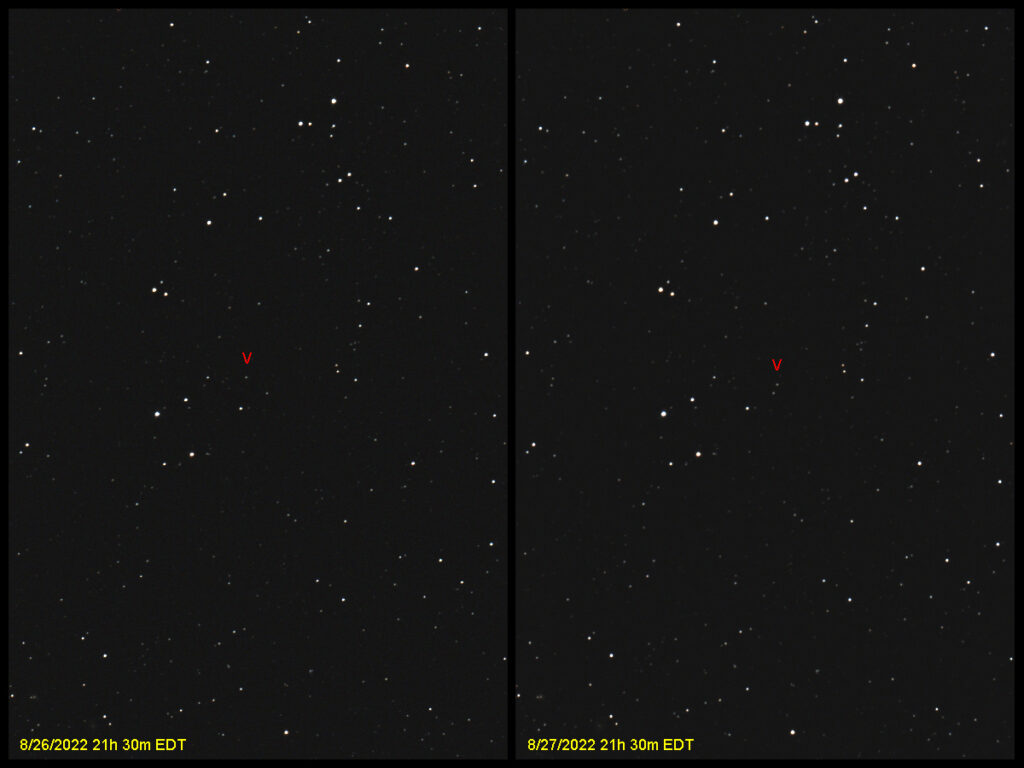
Telescope: Meade 10” LX850 ACF @ f/8, Orion Atlas EQ-G
Camera: Canon EOS Ra
Filter: GSO IR Blocking Filter
Guide scope: Astro-Tech 60mm, ASI120MM Mini, PHD2
Exposure: 20x120sec, ISO 800, saved as Raw
Darks: Internal (Long Exposure Noise Reduction On)
Flats: 32×1/50sec, Tee shirt flats taken at dusk
Average Light Pollution: Red zone, Bortle 8, fair transparency, light haze
Lensed Sky Quality Meter: 18.3
Stacking: Mean with a 1-sigma clip.
White Balance: Nebulosity Automatic
Software: Backyard EOS, Deep Sky Stacker, Nebulosity, Photoshop
This is my annual pilgrimage to the frozen outlands beyond the orbit of Neptune and my homage to Clyde Tombaugh who discovered Pluto on photographic plates taken at the Lowell Observatory in 1930. These two images were taken almost exactly 24 hours apart showing Pluto’s apparent motion against the background stars (marked by red ‘V’ symbols). I say ‘apparent’ as this motion has more to do with the Earth than Pluto. The true motion of the outer planets is from west to east, but in these images Pluto appears to move from east to west (retrograde). This results from our changing perspective as the Earth sweeps past Pluto in its orbit around the sun. Pluto will remain in retrograde motion until October 6th.
When these images were taken Pluto was 3.14 billion miles away shining at Mv 14.4. The sun’s illumination took a little over 4-1/2 hours to reach Pluto and the feeble reflected sunlight took another 4-1/2 hours to make the journey back to the Earth.
Pluto is currently well placed in the southern sky at dusk.
Recent Comments